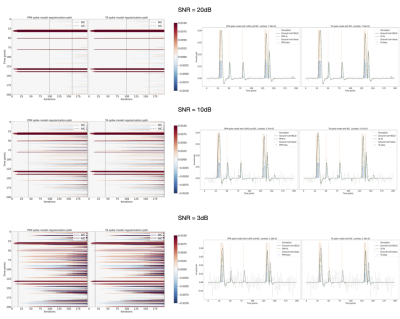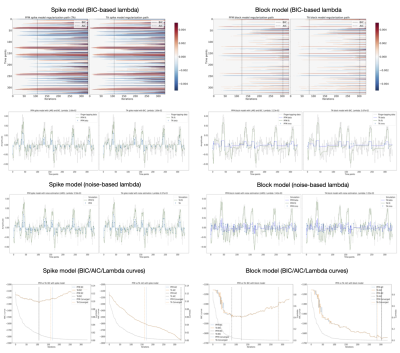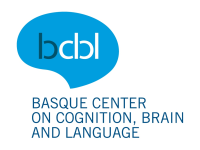Eneko Uruñuela1, Stefano Moia1, and César Caballero-Gaudes1
1Basque Center on Cognition, Brain and Language, Donostia - San Sebastián, Spain
1Basque Center on Cognition, Brain and Language, Donostia - San Sebastián, Spain
We found that Paradigm Free Mapping and Total Activation yield identical or nearly identical estimates of the activity-inducing and innovation signals respectively when the same hemodynamic response function and regularization parameter are employed.

Figure 2: Spike model simulations. (Left) Heatmap of the regularization paths of the activity-inducing signal $$$\mathbf{s}$$$ estimated with PFM and TA as a function of $$$\lambda$$$ (increasing number of iterations in x-axis), whereas each row in the y-axis shows one time point. Vertical lines denote iterations corresponding to the Akaike and Bayesian Information Criteria (AIC and BIC). (Right) Estimated activity-inducing (blue) and activity-related (green) signals when $$$\lambda$$$ is set based on BIC. All estimates of $$$\mathbf{s}$$$ are identical, regardless of SNR.

Figure 4: (Row 1) Regularization paths of the estimated activity-inducing signal $$$\mathbf{s}$$$ (spike model - left) and innovation signal $$$\mathbf{u}$$$ (block model - right); (Row 2) activity-inducing, innovation and activity-related (fit, $$$\mathbf{x}$$$) signals when $$$\lambda$$$ is chosen based on BIC, or (Row 3) based on convergence of residuals to have same variance as MAD estimate of noise; (Row 4) Corresponding curves of BIC and AIC, where the vertical lines indicate the three options to select $$$\lambda$$$ (BIC, AIC and Converged/MAD).
